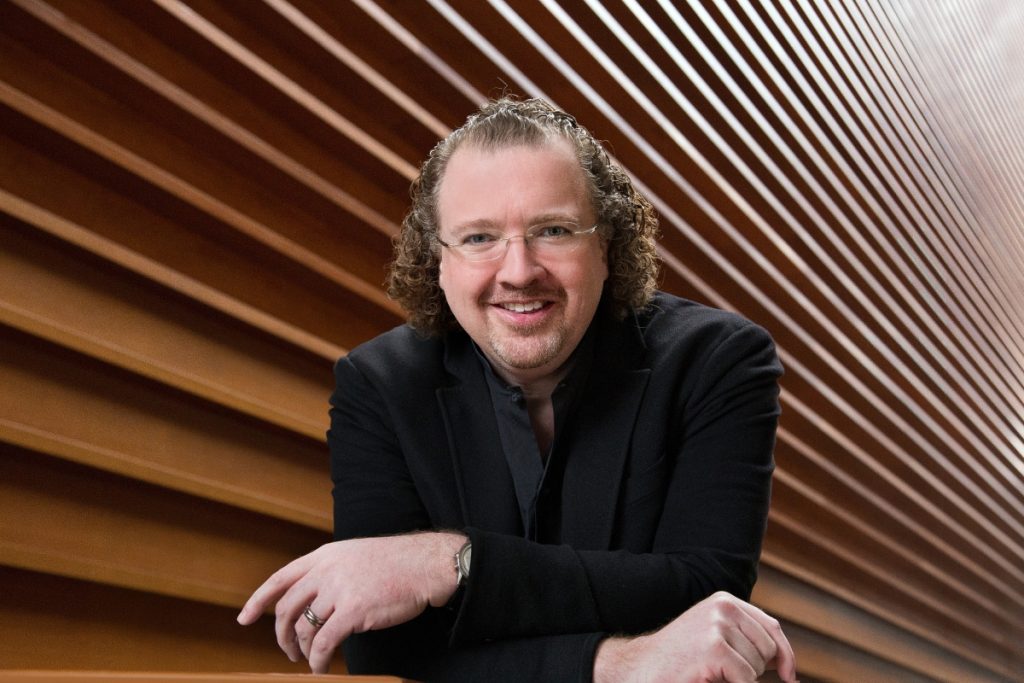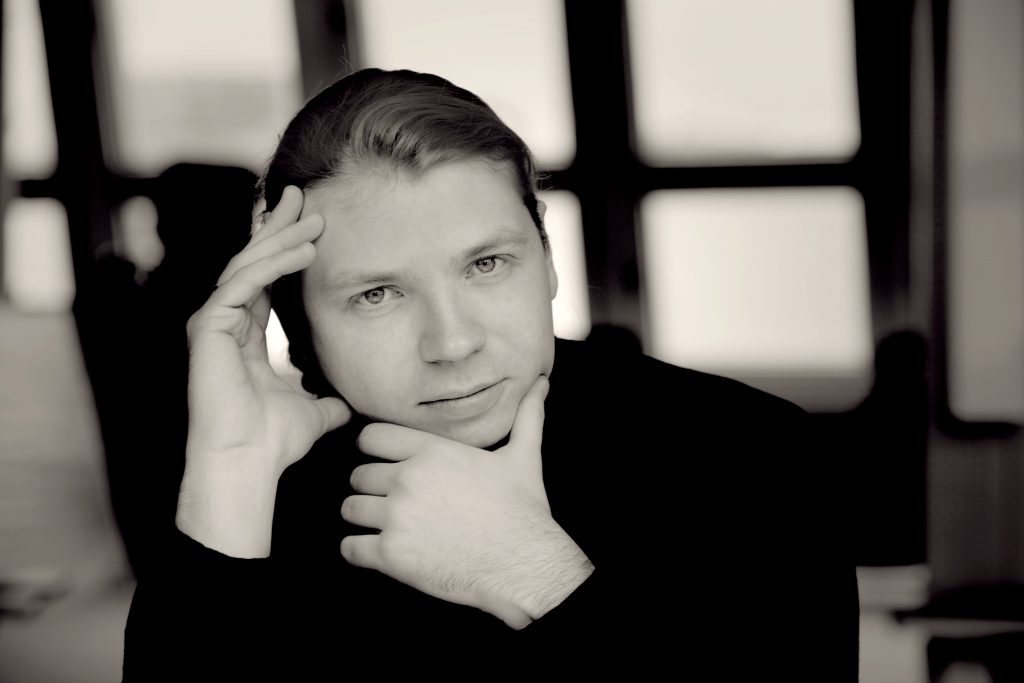
The Kravis Center was packed Tuesday night, with every seat sold for a visit from the Philadelphia Orchestra. Well-dressed Philadelphians turned out in their hundreds to support the 93 players of their world-famous orchestra although the program had no sugar-coated “lollipops.”
It was an all-Russian evening: Rachmaninov’s Third Piano Concerto and Shostakovich’s Fifth Symphony. The orchestra’s conductor Tuesday night, Stéphane Denève, has led more programs than any other principal guest conductor and holds the post of chief conductor of the Brussels Philharmonic in Belgium. Pianist Denis Kozhukhin of Russia won the Queen Elisabeth Prize in 2010 at age 24, and has subsequently appeared with most major symphony orchestras in Europe and the Americas.
Rachmaninov performed his Third Concerto in 1909 on a visit to New York as unrest in his country grew. In parts, this concerto could be said to reflect the oncoming Revolution of 1917, with its massive crescendos ending in thunder claps. But overall, the work is very romantic.
Pianist Kozhukhin, with his long blond hair tied in a bun, epitomized the romantic player seen in so many paintings from the late 19th century. He opened with a light touch, after which the work becomes an ensemble piece with piano and orchestra evenly divided. The extraordinary difficult cadenza toward the end of the first movement was technically proficient and brilliantly played.
In the second movement, the pianist points up the flowing theme delicately, which leads to a clever exposition. Philadelphia’s violin section gave Kozhukhin lovely, smooth support. I listened for the famous warm honey sound that carried the orchestra through Stokowski and Ormandy’s time, but there was no hint of it; were it to be anywhere it would be here. I believe it is a good thing that it has gone. After all, we have the old RCA recordings that captured it.
Kozhukhin played with little feeling in the next passage, but his silken touch in the higher ranges reflected his facial expressions: bland and automatic. Coming to life in the scherzo-like, section he played the quick triple meters brilliantly. Lacking a handkerchief, he wiped his brow with his right hand, drying it on his trouser leg more than once.
The finale, a bracing march that barely stops for breath, has a climax leading to one of the truly hair-raising moments of romantic pianism, released through a series of short cadenzas and clashing cymbals. Flashing fingers of the pianist across the keyboard and this world-class orchestra joined forces to bring this romantic classic to a sudden ending, which was met by an immediate standing ovation.

Kozhukhin, after many solo bows, played an encore: Gluck’s “Dance of the Blessed Spirits,” from his opera Orfeo ed Euridice, in a sweet arrangement for piano by Giovanni Sgambati.
Shostakovich’s Fifth Symphony (in D minor, Op. 47) was his answer to the criticism of his opera, Lady Macbeth of Mtsensk, which dictator Josef Stalin walked out during a performance at the Bolshoi in January 1936. An editorial in Pravda (which may have been written by Stalin himself) followed that performance with an attack, calling the opera “leftist bedlam, inhuman music, a petty-bourgeois formalist pretense.”
Those were fatal words back then, with show trials going on and family, friends and colleagues disappearing. Except for a few brave men, the music establishment lined up in opposition to him. So he wrote the massive Fourth Symphony that year to show he was unafraid, but at the last minute it was withdrawn, not to be performed until 1961.
The Fifth had its premiere on Nov. 21, 1937, under the baton of Evgeny Mravinsky and the Leningrad Philharmonic. This time he scored an absolute, unforgettable triumph.
One of the high points of the performance was the third movement (Largo), which Denève and the Philadelphians gave a wonderful interpretation, with lush strings winning the day. The 10 cellos and two harps that complete the third movement were marvelous to hear.
The last movement, marked Allegro non troppo, has the orchestra in full-blast mode breaking the Largo’s mood. The movement has an over-the-top exuberance and triumphalism in which Shostakovich perhaps overdoes the contrasts of loud and soft passages. In any event, the symphony ends in a glorious cacophony of sound from the full orchestra.
That ending was followed Tuesday night by an explosion of applause, one of the longest and loudest receptions by an audience that I’ve ever heard at the Kravis Center. Of this work, Shostakovich said he “wanted to convey tragic conflicts of great inner spiritual turmoil, with optimism asserting itself as a world view.” In its reading of the Fifth Symphony, the Philadelphia Orchestra and Stéphane Denève fulfilled the composer’s intentions brilliantly.